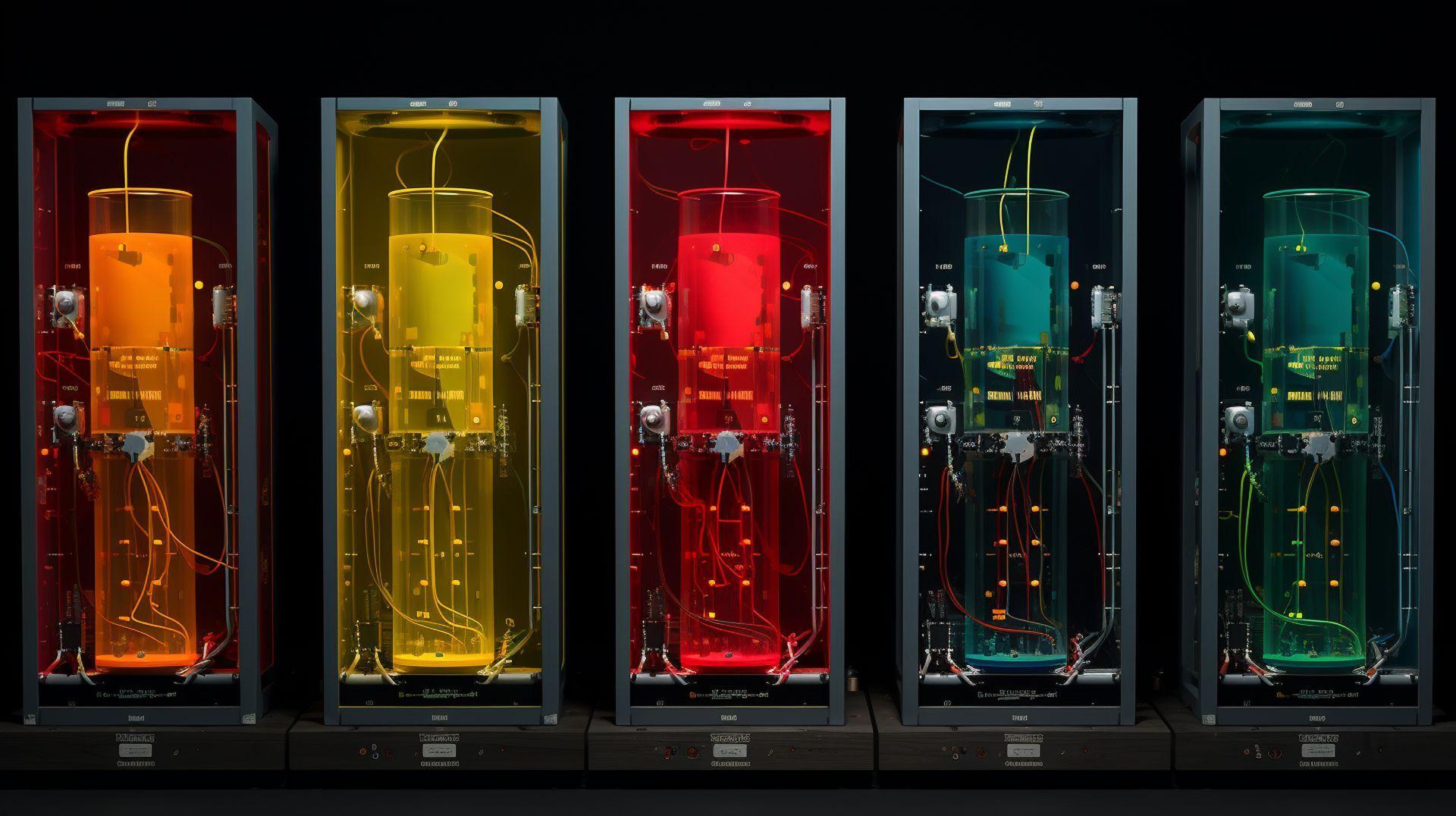With Google Quantum AI as your guide and the Cirq framework as your tool, you can set to journey through the quantum labyrinth, challenging the conventions of today’s computing limits.
Think of it like this: our current computers have a speed limit. Quantum computing, with its fascinating tiny particle behaviors, aims to smash that limit.
What makes quantum computers the talk of the town? It’s their “oomph” in processing: Thanks to qubits, these computers can handle tasks at lightning speed. A 64-qubit quantum system can chew through 36 billion billion bytes of data in a single go.
What are microcomputers: The miniature wonders of modern technology
The secret? Qubits that can multitask (called superposition) and work in pairs (entanglement).
Seeing quantum computing as the software industry’s next leap isn’t a stretch. And Google Quantum AI is leading the charge, offering tools and connecting curious minds worldwide.

What is Google Quantum AI?
Google Quantum AI isn’t just dipping its toes into the realm of quantum computing; it’s pioneering the next wave. Its mission? Pushing the boundaries of what quantum computers can do, and crafting tools that empower researchers to transcend classical computing limits.
Tailor-made both in hardware and software, Google is laser-focused on crafting innovative quantum algorithms to tackle real-world, practical challenges.
Researchers discovered a new method to boost quantum computer performance
Understanding the Cirq framework
The Google Quantum AI team describes Cirq as “an open source framework for programming quantum computers.”
But what does that mean for you and me? Think of Cirq as a toolbox in Python, meticulously designed to draft, refine, and optimize quantum circuits. Whether you’re aiming to execute these on actual quantum machines or simulators, Cirq has your back. Especially when navigating the intricate waters of today’s mid-scale quantum computers, Cirq stands out by offering a clear path, ensuring you harness the full power of the hardware.

Features of Cirq framework
- With Cirq, you can construct quantum circuits using gates that act on qubits, grasping concepts like ‘Moment’ and employing diverse insertion strategies to architect your optimal circuit.
- Enhance your circuits by segmenting and reshaping them, ultimately turning them into more efficient versions that cater better to your needs.
- The feasibility of a circuit often hinges on hardware constraints. Cirq equips you with the know-how to define devices, ensuring these constraints are appropriately addressed.
- Built-in simulators are one of Cirq’s strong suits, offering both wave functions and density matrix capabilities. Whether it’s handling noisy quantum channels via monte carlo methods or full-blown density matrix simulations, Cirq has got you covered. Notably, it seamlessly integrates with the advanced wavefunction simulator: qsim.
- Emulating quantum hardware becomes a breeze with Cirq’s Quantum Virtual Machine, allowing for a realistic testing environment.
- Beyond simulation and emulation, Cirq is the chosen platform for conducting experiments on Google’s very own quantum processors.
How to use Cirq?
The Google Quantum AI team provides extensive guidance for both beginners and advanced users:
- If you’re just dipping your toes into the waters of Cirq, Google has laid out a beginner-friendly pathway for you. Dive into their tutorial to get acquainted with the ABCs of Cirq. You’ll differentiate between gates and operations, and also grasp how to craft circuits using moments. After building, you can simulate these quantum circuits and explore ways to refine and transform them.
- For those looking to climb a notch higher, there’s a guide on crafting a quantum approximate optimization algorithm suitable for NISQ hardware. Delve into the intricate process of writing a variational algorithm tailored to pinpoint an optimal solution to max-cut — a computational challenge even for classical systems.

Building a community
Google Quantum AI isn’t just about cutting-edge technology; it’s about building an expansive, inclusive community where enthusiasts from all walks can collaborate on software tailored for the quantum computers of the near future.
Their doors are open, and they’re eager for community input.
Interested in staying updated or lending your voice? Google Quantum AI has weekly virtual open source meetings. By joining their email lists, you’ll secure an invite to these dynamic sessions, ensuring you’re plugged into discussions that resonate with your expertise or interests.
- Cirq Weekly Sync: cirq-dev
- OpenFermion Weekly Sync: openfermion-dev
- TensorFlow Quantum Weekly Sync: tfq-dev
- Quantum Circuit Simulation Weekly Sync: qsim-qsimh-dev
But there’s more to community than just talks. You can actively shape the future by contributing to their open source code. Whether you’re a boundary-pushing researcher focused on NISQ computers, a seasoned software engineer, a meticulous technical writer, or a budding student with a zeal for quantum computing, your skills and passion are coveted. Dive into their GitHub repository and be part of the quantum revolution.
- If you’re keen on assisting with Cirq, consider starting with Google’s good first issues list.
- For contributions involving more extensive features, refer to their RFC process to understand the steps involved.

The quantum leap forward
We stand on the precipice of a new technological dawn and the promise of quantum computing beams brightly on the horizon. The paradigm shift that Google Quantum AI and Cirq framework are ushering in doesn’t merely represent a speedier form of computation but an evolution in how we understand and interact with digital realities. The difference between conventional computing and quantum computing isn’t just about efficiency; it’s akin to the contrast between a horse-drawn carriage and a supersonic jet.
The revelations surrounding qubits, superposition, and entanglement might seem esoteric today, but they’re paving the way for innovations that will permeate every facet of our lives, from healthcare to communication to security. With Google Quantum AI and the Cirq framework, we’re not just observing these innovations; we’re actively crafting them.
Featured image credit: Kerem Gülen/Midjourney






